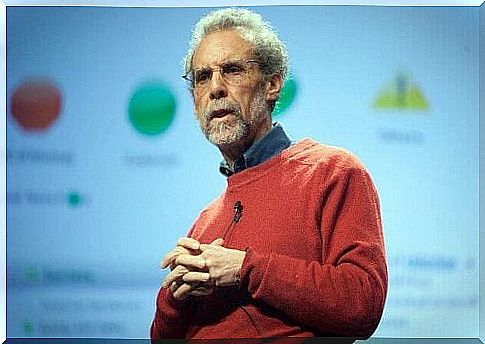Emotional Leadership According To Daniel Goleman

Knowing how to lead is one of the most important skills for people who work in a team. This applies to business managers as well as those who need to motivate others: having the ability to inspire and lead is fundamental to achieving all kinds of goals. While there are many ways to do this, one of the most effective is emotional leadership.
This concept was introduced by Daniel Goleman, Richard Boyatzis and Annie McKee in their book Primal Leadership . They talked about six types of emotional leadership. Each of them is useful in a specific situation, but the good news is that all of them can grow through effort and involvement.
However, emotional leadership is not the only way to lead a team or group. In this article, we will see precisely what it consists of and what are its main advantages or disadvantages compared to a more rational approach.
What is emotional leadership?
The leadership styles described by Goleman, Boyatzis and McKee differ from those described by other authors in the marked effects on the emotions of those who obey them. So each of these six types will have a different impact on how a group or team will feel. Therefore, depending on the results you want to achieve, one of these leaderships will be more effective.
One of the most important concepts in the book Primal Leadership is that there is no style of emotional leadership that is better than the others. Each of these styles has a series of advantages and points that don’t always work. It is therefore necessary to know them well when deciding to use one. A good leader must be able to dominate them all and choose the most appropriate for each situation.

The six types of emotional leadership are:
- Coercive
- Authoritarian
- Affiliate
- Democratic
- Performative
- Coach
Even though they have quite different characteristics, all of them rely on understanding other people’s emotions. This is where the term “emotional leadership” comes from. However, is using one of these six styles to lead a group still appropriate? The answer depends on the circumstances we face.
Advantages and Disadvantages of Emotional Leadership
The truth is, like virtually any other ability or approach, this view of leadership has its ups and downs. We will see which are the most important. This will help us to know, for each situation, whether appealing to emotions is the most appropriate thing to do or, on the contrary, we should use an approach that would focus more on logic and less on empathy.
Advantages
It is undeniable that leading a team based on good emotional intelligence will provide us with all kinds of benefits. One of the most important is that it will help us strike a balance between achieving our goals and creating good relationships at work. This probably involves sacrificing the efficiency of the company to some extent; however, in return, we will lead to greater well-being and happiness for all employees.
In addition, a good emotional leader must be able to reinforce the positive characteristics of his whole team. Using the teachings of this style of group leadership, he can help others discover and develop their talents. It will also succeed in motivating employees even more. However, this is fundamental for the good management of a company.

Disadvantages
Even so, using an emotional leadership style may not be the optimal solution for every situation. Sometimes this can have a whole host of negative repercussions, like the ones we’ll now list:
- The leader can start to act impulsively. However, impulsivity could be harmful to the company and its objectives because, in general, management requires a more rational approach.
- Self-control issues. Sometimes a leader has to make complicated decisions, which can be emotionally tough. If he shows too much empathy, the execution can become complicated and have negative consequences.
- Results that slow down or worsen. Sometimes it is necessary for a leader to focus exclusively on what he needs to achieve. However, for someone who cares too much about the emotions of others, this is an extremely difficult point.
- Emotional fluctuations can take place. Finally, too much empathy and connection with emotions can lead them to have too much of an influence on a person’s mood. In general, a leader should be an example of strength and stability. However, being successful can be very complicated when we find ourselves under the yoke of uncontrollable feelings.
In general, adopting one of the six styles of emotional leadership is very beneficial for a business or a work team. However, sometimes it is necessary to assess whether using this form of leadership is the right thing for workers and for the goals set. As with all areas of life, the answer is not that simple.










